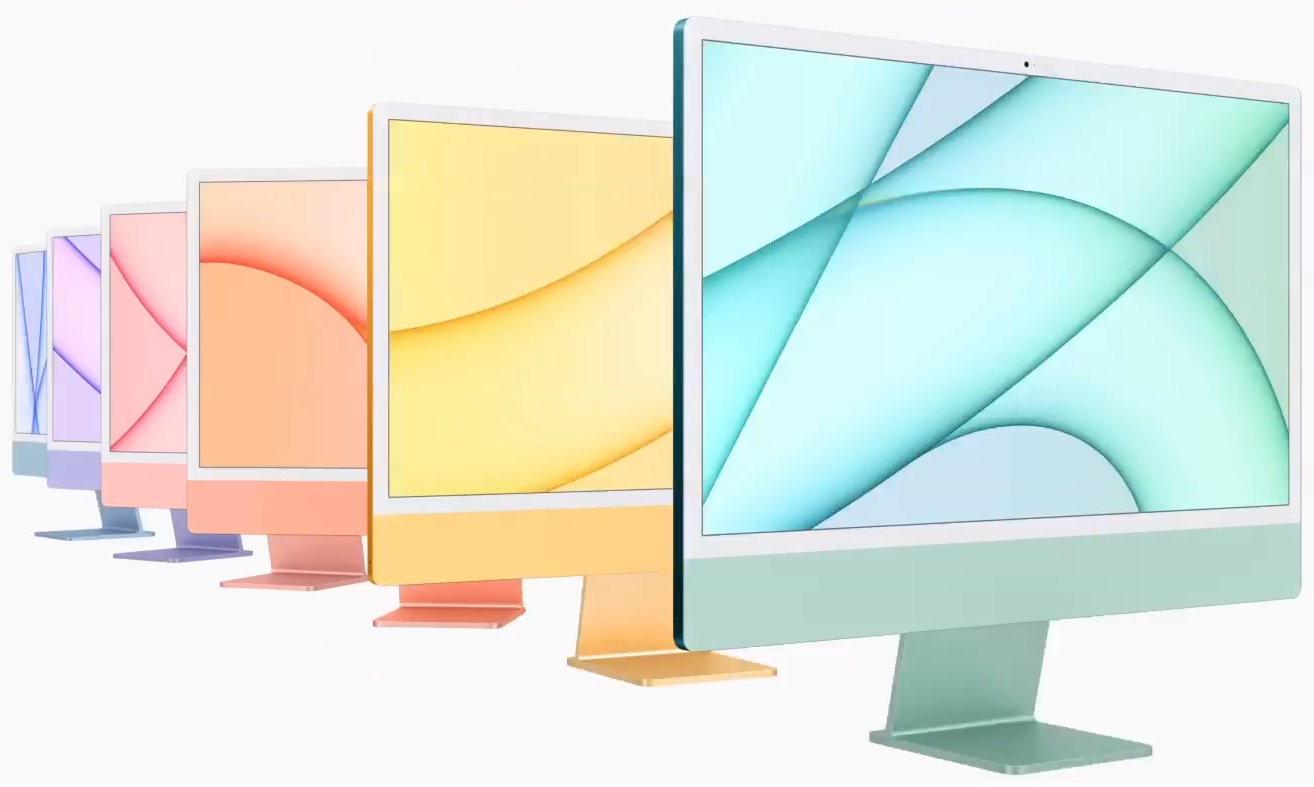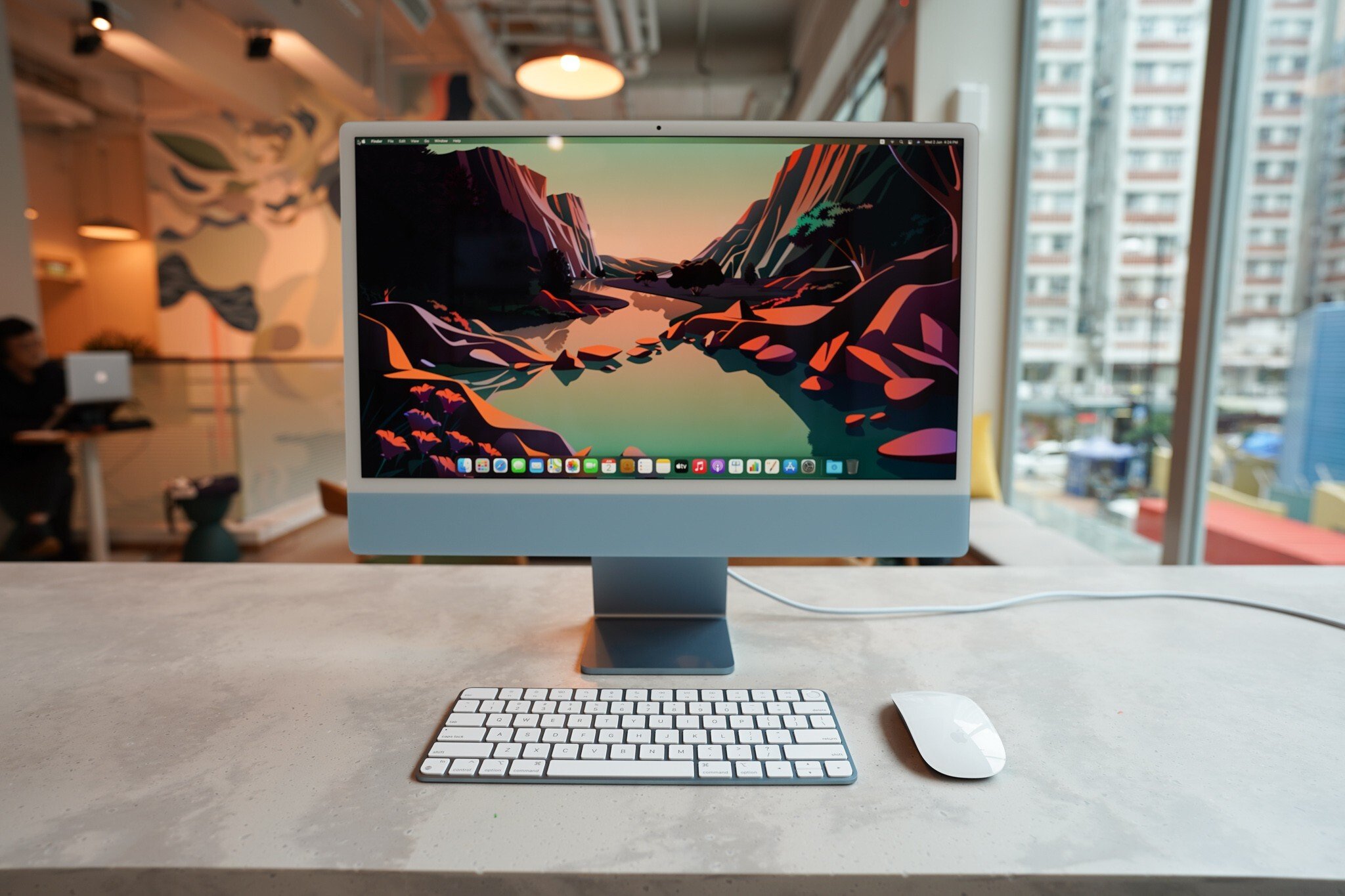GOOD STUFF of iMac The M1 processor uses what’s called a “hybrid” configuration. The Apple’s M1 has four very fast cores and four lower-powered high-efficiency cores. This allows M1 devices to deliver arguably the best performance-per-watt in the world. It also means that they’re nearly unbeatable in single-core workloads. iMac can easily hop between over 25 Chrome tabs with Cinebench, in the background, with no stutter or slowdown. This iMac is sleek. Though it has a 24-inch screen. The screen borders are reduced by 50% to squeeze the bigger screen into the compact chassis. The device is also 11.5 millimeters thick making it quite thin.
The Color Option in iMac
The Upgrades in iMac
Every other notable part of the iMac has been upgraded in some way. There’s a 4.5K (4480 x 2520) Retina display, a step up from the predecessor’s 4096 x 2304 Retina display. It has Apple’s True Tone technology, which automatically adjusts colors and intensity based on your surroundings. The company claims that they’re the best camera, mic system, and speaker system that have ever appeared in a Mac. Apple has upgraded their camera, microphones, and speakers. The iMac has a 1080p FaceTime HD camera, with a higher resolution than the 720p shooter embedded in the 21.5-inch iMac. The built-in image signal processor and neural engines with M1 help optimize your picture in low-light settings.
The Target Market of the iMac
The Few Limitations of iMac
iMac is not for people who can’t handle dongles and docks, also people who already own a 27-inch iMac, because it would be a downgrade in display size and quality, port selection, upgradability, and raw power. And it’s not for people with serious performance needs.
One can not configure the iMac with more than 16GB of memory and 2TB of storage; making it unattractive for those who regularly edits 4K or 8K video, for example. Other sit-back is the memory and storage are soldered, so they can’t be upgraded after purchase. Ports are also bizarrely limited; the base model has just two Thunderbolt / USB-4 ports and a headphone jack, while more expensive models have an additional two USB-3 ports and Gigabit Ethernet. Tech enthusiasts especially those who make their own upgrades may find it a waste of money (as they’re not the target audience though its specs might suit their needs.) Apple is targeting this iMac as a “home and family” PC, though its processor is clearly capable of all kinds of professional work.
Also Read: iMac Pro: Apple discontinues the base model iMac Pro

